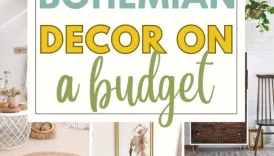The Ultimate Guide to Choosing the Right Paint Colors for Your Home

Importance of Paint Colors in Home Design
When it comes to home design, paint colors play a pivotal role in shaping the ambiance and energy of a space. Choosing the right colors can evoke emotions, set moods, and even influence behaviors. For instance, soft blues might create a serene atmosphere in a bedroom, while vibrant yellows can energize an open living area.
- The Ultimate Guide to Choosing the Right Paint Colors for Your Home
- Importance of Paint Colors in Home Design
- Factors to Consider When Choosing Paint Colors
- Understanding Color Theory
- Basics of Color Wheel
- Color Psychology in Interior Design
- Assessing Your Space
- Natural Light and Room Size
- Existing Furniture and Decor
- Popular Paint Colors for Different Rooms
- Neutral Colors for Versatility
- Accent Colors for a Pop of Personality
- Choosing the Right Finish
- Matte vs. Satin vs. Glossy Finishes
- Durability and Maintenance Considerations
- Testing Paint Samples
- Importance of Paint Samples
- How to Properly Test Paint Colors
- Working with Color Schemes
- Monochromatic vs. Analogous vs. Complementary Schemes
- Creating a Cohesive Color Palette
- Trends in Paint Colors
- Top Color Trends of the Year
- Incorporating Trendy Colors in Your Home
- Professional Tips and Tricks
- Tricks to Make a Room Look Bigger or Cozier
- How to Use Accent Walls Effectively
- Exterior Paint Colors
- Factors to Consider for Exterior Paint Selection
- Popular Exterior Color Combinations
- DIY vs. Hiring a Professional Painter
- Pros and Cons of DIY Painting
- Benefits of Hiring a Professional
- Resources for Inspiration
- Online Tools for Choosing Paint Colors
- Inspiration from Interior Design Blogs and Magazines
Factors to Consider When Choosing Paint Colors
Selecting the perfect paint color isn’t just about personal preference. It’s important to consider several factors:
- Room Functionality: How will you use the space?
- Lighting: Natural light and artificial sources affect color perception.
- Size of the Room: Lighter colors can make small spaces feel larger.
- Existing Decor: Will the paint complement your furniture and accessories?
By considering these elements, homeowners can create a harmonious living environment that reflects their style and enhances their day-to-day life.
Understanding Color Theory
Basics of Color Wheel
Understanding color theory starts with the color wheel, a tool that visually represents the relationship between colors. Created by Isaac Newton, it organizes colors in a circular format, making it easier to understand how colors interact. Here are some key components:
- Primary Colors: Red, blue, and yellow—they cannot be made from other colors.
- Secondary Colors: Green, orange, and purple, made by mixing primary colors.
- Tertiary Colors: Combos of primary and secondary colors, like red-orange.
Color Psychology in Interior Design
Beyond aesthetics, colors have psychological impacts that can influence our emotions. For example:
- Blue: Calming and tranquil—perfect for bedrooms.
- Red: Energizing and stimulating—great for dining areas.
- Green: Natural and refreshing—ideal for living spaces.
By understanding color psychology, designers can craft spaces that not only look good but also feel good to live in!
Assessing Your Space
Natural Light and Room Size
Before diving into the paint selection process, it’s essential to assess your space, starting with natural light and room size. An abundance of natural light can dramatically change how a color is perceived, making it appear brighter or softer. On the flip side, smaller rooms with limited light may benefit from lighter hues to create an illusion of spaciousness. Here are some tips to consider:
- Large Windows: Utilize bold colors; they won’t overwhelm the space.
- Small Rooms: Opt for pale shades to avoid a claustrophobic feel.
Existing Furniture and Decor
Don’t forget to factor in your existing furniture and decor! The paint should complement, not clash. For instance, if you have a vibrant red couch, consider neutrals or softer hues for the walls to balance the room. Whenever possible, bring swatches with you to see how they interact with your furniture; this step will ensure a cohesive and inviting atmosphere in your home.
Popular Paint Colors for Different Rooms
Neutral Colors for Versatility
When it comes to painting your home, neutral colors are a timeless choice that offers incredible versatility. They create a calm, inviting backdrop that allows your personal style to shine through. Common neutral shades include whites, grays, and taupes. For example, a soft beige can warm a living room, while a cool gray might lend sophistication to a home office. Consider these benefits of neutrals:
- Easy Coordination: They easily blend with various decor styles.
- Timeless Appeal: Neutral colors stand the test of time.
Accent Colors for a Pop of Personality
Don’t forget the power of accent colors! They can bring energy and character to a space. Whether it’s a bold feature wall in a vibrant teal or playful mustard yellow kitchen cabinets, accent colors allow you to express your personality. When deciding on accent colors, consider:
- Consistency: Ensure they harmonize with your neutral base.
- Room Functionality: More vibrant accents can energize spaces like playrooms or home gyms.
Combining versatile neutrals with expressive accent colors creates a balanced, visually striking environment that reflects your unique style!
Choosing the Right Finish
Matte vs. Satin vs. Glossy Finishes
Once you’ve settled on your color scheme, it’s time to decide on the right finish for your paint. Each type of finish offers its unique aesthetic and functional benefits.
- Matte Finish: Provides a soft, non-reflective surface, ideal for ceilings and low-traffic areas like bedrooms. However, it can be challenging to clean.
- Satin Finish: Offers a subtle sheen and is easier to clean, making it a great choice for living rooms and hallways.
- Glossy Finish: Highly reflective and durable, perfect for areas that see a lot of wear, like kitchens and bathrooms. Plus, it highlights architectural details beautifully.
Durability and Maintenance Considerations
Think about how much maintenance you are willing to commit to. While glossy finishes are more durable and easier to wipe down, they can also show imperfections more easily. On the other hand, matte finishes may require more frequent touch-ups, especially in high-traffic areas. Balancing your aesthetic preferences with practical considerations will ensure your painted surfaces not only look great but also stand the test of time.
Testing Paint Samples
Importance of Paint Samples
Before committing to a full room of paint, testing samples is crucial to ensuring you love the color. A paint sample allows you to see how the color interacts with lighting throughout the day and how it complements your existing decor. For example, a grey that seems warm in the store might reveal its cooler undertones on your walls, thus altering your emotional response to the room.
- Avoid Expensive Mistakes: Small patches can save you from a costly full repaint.
- Visualize the Space: Testing helps you envision how the color transforms the room.
How to Properly Test Paint Colors
To get accurate results, follow these steps:
- Choose 2-3 Samples: Limit your options to avoid feeling overwhelmed.
- Apply to the Wall: Paint a square or long strip directly on the wall or a large poster board.
- Observe at Different Times: Check the samples at various times of day to see how natural light influences the color.
- Consider the Finish: Don’t forget to consider the finish you selected earlier; it can affect the final look.
Giving yourself a chance to fully appreciate how the colors will feel in your space can make all the difference in creating a home that truly reflects your style!
Working with Color Schemes
Monochromatic vs. Analogous vs. Complementary Schemes
When shaping your interior decor, understanding color schemes is essential. Each type plays a unique role in setting the room’s mood.
- Monochromatic Scheme: This involves using variations of a single color, creating a unified and harmonious look. For example, different shades of blue can evoke tranquility.
- Analogous Scheme: Here, you choose colors that sit next to each other on the color wheel, like blue and green, to create a soothing space.
- Complementary Scheme: This approach uses colors opposite each other for contrast—like blue and orange—adding vibrancy and energy to a room.
Creating a Cohesive Color Palette
To create a cohesive color palette, consider these tips:
- Start with a Base Color: Use this for larger areas like walls.
- Add 1-2 Accent Colors: Brighten the space with these hues in decor items.
- Incorporate Neutrals: They balance your vibrant choices, allowing them to stand out.
By thoughtfully selecting and blending different color schemes, you can craft inviting spaces that reflect both your personality and aesthetic vision!
Trends in Paint Colors
Top Color Trends of the Year
Staying updated with paint color trends can bring fresh life to your home. This year, earthy tones and soft pastels are ruling the scene. For example, warm terracottas and muted greens evoke a sense of nature and calm, making them perfect for creating cozy spaces. Other popular choices include:
- Sage Green: A calming, nature-inspired hue ideal for kitchens and bathrooms.
- Rich Navy: Adds depth and sophistication, perfect for accent walls.
- Soft Neutrals: Creamy whites and gentle grays provide a timeless appeal that allows flexibility in decor.
Incorporating Trendy Colors in Your Home
Incorporating these trendy colors doesn’t have to be overwhelming. Consider these methods:
- Accent Walls: Paint one wall in a bold color to create a statement space without overwhelming the room.
- Accent Decor: Use trendy colors in throw pillows, artwork, or rugs for a subtle touch.
- Small Rooms: Use pastels to make smaller spaces feel airy.
With a few strategic choices, you can embrace current trends while maintaining your unique style, creating an inviting atmosphere throughout your home.
Professional Tips and Tricks
Tricks to Make a Room Look Bigger or Cozier
Creating the illusion of more space or coziness in a room can be achieved through thoughtful paint choices. To make a room feel larger, consider:
- Light, Cool Colors: Soft hues like pale blues or whites reflect light, making the room feel airy.
- Vertical Stripes: Incorporating vertical stripes can draw the eyes upward, enhancing the perception of height.
Conversely, to create a cozier atmosphere, you can:
- Warm, Dark Colors: Shades like deep burgundy or charcoal instill a sense of intimacy.
- Layer Textures: Use rich fabrics for curtains or throw pillows in warm tones to create depth.
How to Use Accent Walls Effectively
Accent walls can add personality and focal points in any room. Here’s how to use them effectively:
- Choose a Focal Point: Position accent walls behind key furniture pieces like a bed or sofa.
- Bold Colors: Opt for a brighter or deeper shade than the rest of the room to make it stand out.
- Artwork Integration: Consider incorporating artwork or shelves on the accent wall to enhance its appeal.
By implementing these professional tips, you can transform your living areas with ease, achieving either spaciousness or warmth that suits your lifestyle.
Exterior Paint Colors
Factors to Consider for Exterior Paint Selection
When choosing exterior paint colors, several factors come into play that can significantly influence your decision. First, consider the architectural style of your home. A traditional Victorian might require softer, classically inspired colors, while a modern home can handle bolder shades. Additionally, local climate should be taken into account; for instance, lighter colors reflect heat better in sunny regions, while darker colors can absorb warmth in colder climates. Finally, check any homeowner association guidelines, if applicable, to ensure compliance with neighborhood aesthetics.
Popular Exterior Color Combinations
Some popular exterior color combinations can elevate the look of your home:
- Classic White and Navy Blue: Timeless and elegant; perfect for coastal vibes.
- Soft Gray and Charcoal: Contemporary and chic; works well for modern architecture.
- Earthy Tones with Accent Trim: Shades like taupe or sage accompanied by white or cream for a natural look.
By thoughtfully considering these elements, you can select an exterior color scheme that not only enhances your home’s curb appeal but also reflects your personal style.
DIY vs. Hiring a Professional Painter
Pros and Cons of DIY Painting
Taking on a painting project yourself can be a rewarding experience, both creatively and financially. Some pros of DIY painting include:
- Cost Savings: You save on labor costs, making it a more budget-friendly option.
- Personal Satisfaction: There’s a unique joy to seeing your hard work pay off with your own hands.
However, there are also cons:
- Time-Consuming: It can take longer than anticipated, especially for larger projects.
- Skill Level: Inexperience can lead to mistakes, resulting in uneven finishes or overlooked details.
Benefits of Hiring a Professional
On the other hand, hiring a professional painter brings several benefits, such as:
- Expertise: Professionals have the skills to deliver high-quality, flawless results.
- Efficiency: They can complete the job quicker, minimizing disruption to your home life.
- Proper Tools: Access to professional-grade tools and paint ensures better durability and finish.
Ultimately, your choice between DIY and professional help should depend on your budget, time, and confidence in your painting abilities. Making an informed decision can lead to a beautifully transformed space, whether you do it yourself or hire an expert!
Resources for Inspiration
Online Tools for Choosing Paint Colors
In today’s digital age, there’s no shortage of online tools to help you choose the perfect paint colors. Websites like Sherwin-Williams and Behr offer visualizers that allow you to upload photos of your spaces and experiment with different hues. This can be incredibly helpful—like when I used a visualizer to test a deep green wall color against my light-colored furniture, saving me from a potentially mismatched disaster!
- Color Palettes: Explore color palette generators for harmonious combinations.
- Virtual Rooms: Use apps that simulate paint on walls to visualize your choices.
Inspiration from Interior Design Blogs and Magazines
Another rich source of inspiration comes from interior design blogs and magazines. Popular publications like Architectural Digest or blogs such as Apartment Therapy showcase stunning home makeovers and the latest trends, offering endless ideas to spark your creativity.
- Mood Boards: Create your own mood board by pinning or saving images that resonate with your style.
- Real Homes: Check out home tours for real-world examples of paint applications.
By leveraging these resources, you can enrich your painting experience and turn your vision into reality, ensuring a beautifully curated space that reflects your personality!





